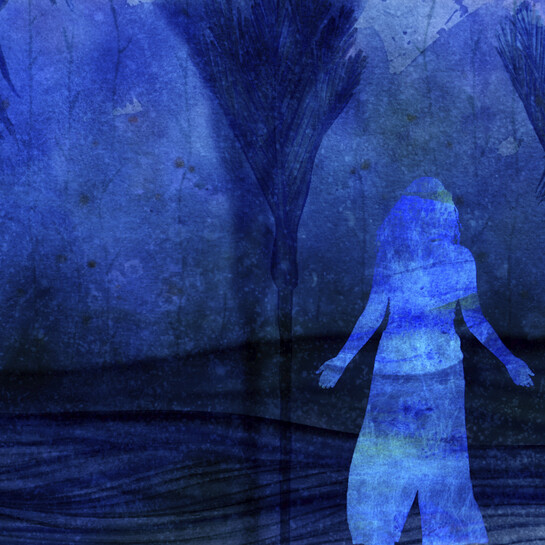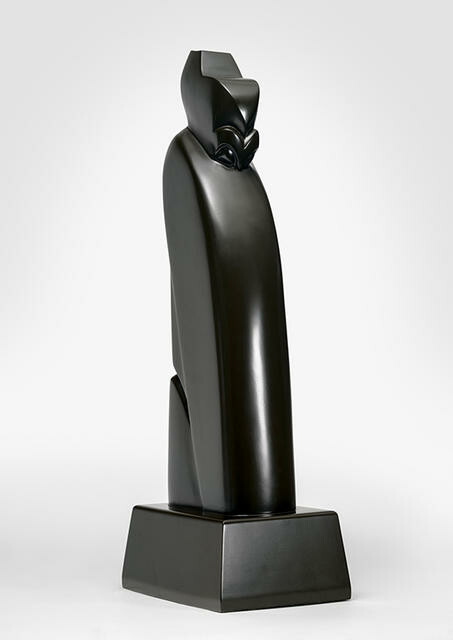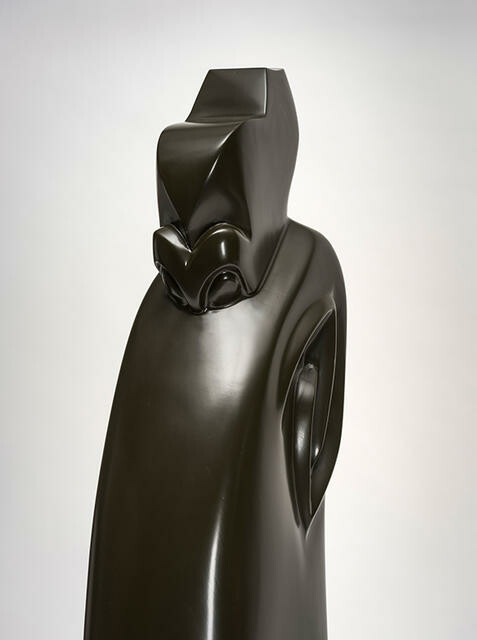John Bevan Ford
Aotearoa New Zealand, b.1930, d.2005
Ngāti Raukawa Ki Kapiti,
Māori
Kaitiaki Figure
- 1997
- Tōtara, lacquer
- Purchased, 1998
- 940 x 250 x 349mm
- 98/62
Location: Sir Robertson and Lady Stewart Gallery
Tags: black (color), carvings (visual works), cloaks, koru (pattern), Māori (culture or style), people (agents), spirals (geometric figures), whakairo
A kaitiaki is a guardian or caregiver, and tiakitaka is a concept associated with the care and protection of people, places and the environment – a repeated theme within John Bevan Ford’s work. According to the artist, “A kaitiaki image is designed to suggest to you that you are in a place or area that should be treated with care and respect.” Here, Bevan Ford’s carved Kaitiaki Figure conveys a sense of watchful presence, a reminder of our responsibilities to each other and the natural world.
He Kapuka Oneone – A Handful of Soil (from August 2024)
Exhibition History
Kaitiaki is the Mâori word for a guardian, responsible for looking after people or places. The cloak shape John Bevan Ford has carved on this figure is an important element in conveying that sense of presence and protection. The use of carving and weaving techniques within drawings and paintings is now a common feature in Mâori art. In the 1960s, however, Ford was a pioneer in this regard. Born in Christchurch, Ford is one of a group of Mâori artists who emerged as art educators in the late 1950s. Since 1988 he has worked as a fulltime artist. In 1987 Ford visited London and studied Mâori collections held in museums, an experience that had a major impact on his work. In 1995 he was invited to lecture and show work from his Pacific Rim series at the Metropolitan Museum of Art, New York, and at the British Museum, becoming the first New Zealander to receive such an invitation. In 1998 Ford was artist in residence at the British Museum.
(Label date unknown)



